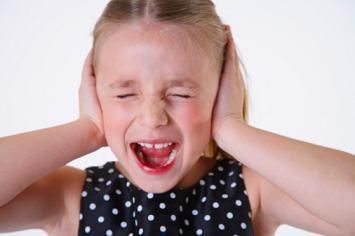
“Mommy, my ear hurts.” Those simple cries from your child could be a number of things…. The kids were out playing and roughhousing when one scratched one side of his head on a tiny branch in the grass. You take a look, but there are no visible signs of a scrape. You ask, “Baby, is it inside or outside your ear where it hurts?”
“Inside.” As he says that word, get on the cell and call us at the ENT Center of Austin to make an appointment. The child may have an ear infection.
Zooming In On The Problem
Usually when a child gets a middle ear infection, it could be one of two things:
- Bacterial growth.
- A viral infection like a bout with your basic common cold.
Occasionally there’s some swelling in the middle ear region. Resulting from the puffiness, fluid starts to build behind the eardrum. We’ve likewise seen other cases. For example, the Eustachian tubes — tiny passageways which connect the back of their nose to their middle ear — become inflamed.
Why?
Couple of reasons. They’re little people so everything is in miniature mode. More horizontal. More narrow. Shorter than an adult. Add to the fact that because of their size, fluid accumulates easier leading to bacterial growth.
Kids being the petite creatures they are, they’re still trying to crank-up their immune system to fight disease like a full-fledged grown-up.
The List of Symptoms
Off-the-top, it’s pretty hard to detect unless you’re a doctor. Still there are some tell-tale signs that if you see them, then there’s a good possibility he or she has an ear infection. Things like this:
- More crying than usual, especially when lying down.
- Fluid coming out of the ears.
- Fever or headache.
- A child who is always pulling on an ear.
- Trouble sleeping or hearing.
Taking Care of Business
We’re going to pull-in the help of Dr. Robert M. Jacobson, chair of the Mayo Clinic’s Department of Pediatric and Adolescent Medicine Treatment. His advice: Don’t go overboard with treatment.
“The body’s immune system can usually resolve them. More and more studies show that children treated or untreated are at the same place 10-days out. We are constantly amazed at how many ear infections resolve on their own.”
One caveat. If it’s a baby, medication may be required.
But with humans getting overdosed on antibiotics, we use them sparingly. Our thought is you don’t want to build-up an immunity to these “one-time” miracle drugs. Save the hard stuff for when it’s really, really necessary. We take a more observational course. We tell the parents to keep an eye on their child for 2-to-3 days. We may prescribe some numbing drops and suggest some over-the-counter child pain relievers to reduce their pain.
Finally, when flu shot time rolls around, get your kid vaccinated. It will significantly cut the potential of an ear infection. And don’t shy-away from other important vaccinations. There’s a lot of useless talk going around, saying vaccinations are bad for children.
Don’t believe everything you hear or read. See us at the ENT Center of Austin. We stay up-to-date on scientific things, unlike the rumormongers who come up with all types of useless junk.
Image Source: buzzle.com

